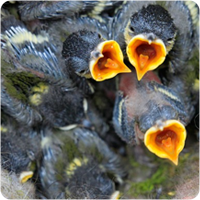Het arrangement Global temperature v456 is gemaakt met Wikiwijs van Kennisnet. Wikiwijs is hét onderwijsplatform waar je leermiddelen zoekt, maakt en deelt.
- Auteur
- Laatst gewijzigd
- 2025-05-11 22:50:23
- Licentie
-
Dit lesmateriaal is gepubliceerd onder de Creative Commons Naamsvermelding-GelijkDelen 4.0 Internationale licentie. Dit houdt in dat je onder de voorwaarde van naamsvermelding en publicatie onder dezelfde licentie vrij bent om:
- het werk te delen - te kopiëren, te verspreiden en door te geven via elk medium of bestandsformaat
- het werk te bewerken - te remixen, te veranderen en afgeleide werken te maken
- voor alle doeleinden, inclusief commerciële doeleinden.
Meer informatie over de CC Naamsvermelding-GelijkDelen 4.0 Internationale licentie.
Aanvullende informatie over dit lesmateriaal
Van dit lesmateriaal is de volgende aanvullende informatie beschikbaar:
- Toelichting
- Deze les valt onder de arrangeerbare leerlijn van de Stercollectie voor Engels voor vwo, leerjaar 4,5 en 6. Dit is thema 'Environment'. Het onderwerp van deze les is: Global temperature. In deze les staat klimaatverandering centraal en het verhogen van de gemiddelde temperatuur op aarde. Hierbij worden een aantal oorzaken en gevolgen besproken en ook de vogelmigratie komt aan bod. De grammaticaopdracht behandelt het gebruik van het woord 'wish'.
- Leerniveau
- VWO 6; VWO 4; VWO 5;
- Leerinhoud en doelen
- Engels;
- Eindgebruiker
- leerling/student
- Moeilijkheidsgraad
- gemiddeld
- Studiebelasting
- 4 uur 0 minuten
- Trefwoorden
- arrangeerbaar, engels, global temperature, klimaatverandering, oorzaken en gevolgen, stercollectie, temperatuur, v456, vogelmigratie, wish
Gebruikte Wikiwijs Arrangementen
VO-content Engels. (2021).
Global temperature h45

 Introduction - Global temperature
Introduction - Global temperature


 Listening & Speaking
Listening & Speaking Reading
Reading Difficult words? Search these on
Difficult words? Search these on 
 Grammar
Grammar

 Task: Writing an email (a report)
Task: Writing an email (a report) What have you learned in this lesson?
What have you learned in this lesson?